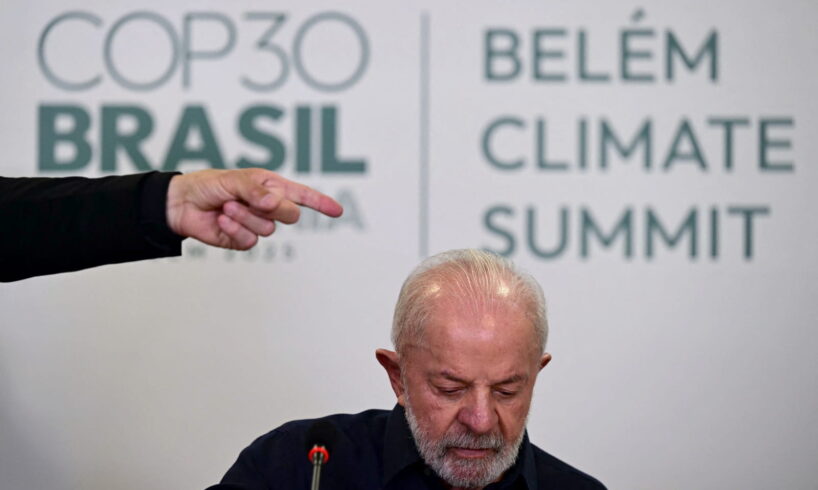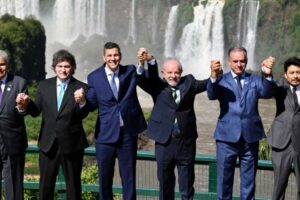
With COP30 about to begin, the global balance of power looks even less familiar than it did a year ago. Economic nationalism is no longer the exception – it’s the organising principle of the world’s two largest economic and geopolitical superpowers. The United States is doubling down on reshoring and protectionist policies. China, grappling with a projected economic slowdown, poses risks to countries that are relying on its demand for raw materials.
The era of open markets and predictable trade flows is at risk. For middle powers such as Brazil and Australia, the temptation may be to cling to old formulas, exporting commodities to whichever superpower is buying. However, current economic uncertainties may prompt some rethinking.
The next two COPs – COP30 in Brazil and COP31 in Australia, assuming that the country can secure the COP hosting rights with the Pacific – will be the defining test of whether middle powers can rise as big players in the climate and economic transition. COP30 will show whether emerging economies can lead with ambition and mobilise resources, while COP31 will challenge Australia to demonstrate that a developed, resource-based nation can reinvent itself as a clean industrial power.
Delegates with plenary papers in the lead up meetings to COP30 (Kiara Worth/UN Climate Change)
COP30, to be held in Belém, Brazil, will be the first major test of how developing and emerging economies can turn climate ambition into industrial transformation. As host, Brazil is positioning itself as a bridge between advanced economies and the Global South – with a focus on forest conservation, renewable innovation, and financing a just transition.
The summit is also expected to sharpen the global conversation on climate finance. Many developing nations are still struggling to mobilise funds for adaptation and mitigation. Brazil’s push for reform of international finance institutions, including fairer access to concessional finance and debt relief, will test whether climate diplomacy without the involvement of the superpowers can deliver tangible results.
Meanwhile, Australia’s economic over-reliance on commodities is well-known, but rarely addressed with the urgency it deserves. Harvard’s 2023 Economic Complexity Index ranks Australia 105th out of 133 countries (dropping down from 62 in just two decades) – far behind other high-income countries, such as Japan, Germany, and the United States. Australia can do better to prepare to thrive in a volatile, high-tech, climate-conscious global economy.
If Brazil and Australia position themselves as partners of choice – providing technology, investment, and reliable clean supply – they can lock in decades of regional integration and economic security.
China alone buys 38% of Australia’s exports. That’s a staggering concentration risk – and one made worse by Beijing’s slowing economy, faltering property sector, and strategic diversification of supply. At the same time, Washington’s protectionist tilt means that even Australia’s closest security partner is putting its own industries first. Australia risks being stranded between two superpowers whose economic agendas rapidly diverge from its own interests.
Brazil and Australia share strikingly similar challenges: both are resource-rich economies seeking to pivot from extraction to innovation. Brazil’s focus on biofuels, sustainable agriculture, and forest-based industries complements Australia’s emphasis on renewables and green manufacturing.
Australia possesses some of the world’s best renewable endowments – abundant sunlight, wind, and land – enough to power both domestic industries and clean exports across the Indo-Pacific. The challenge isn’t resources but building the industrial ecosystem around them: renewable energy precincts, green industrial hubs, and export pathways for hydrogen, ammonia and low-carbon materials.
For both hosts, strategic partnerships across the Global South will be critical. Demand from countries in Latin America and Southeast Asia for sustainable energy and infrastructure is surging. If Brazil and Australia position themselves as partners of choice – providing technology, investment, and reliable clean supply – they can lock in decades of regional integration and economic security.
While the headlines often focus on solar panels and hydrogen, middle powers have another card to play: the circular economy.
Closing material loops, reusing resources, and extending product lifecycles all boost economic complexity. Brazil’s expertise in bio-based materials and waste-to-energy systems, combined with Australia’s advances in materials science and recycling, could define a new wave of “green manufacturing” leadership.
In battery technology, for example, production is dominated by global giants. But recycling and refurbishment remain open territory. With their combined industrial capacity and policy frameworks, Brazil and Australia could lead in battery life extension and critical minerals recovery — a niche that’s both environmentally and strategically valuable.
Policy clarity and strategic turning points
If COP30 and COP31 are to succeed as turning points for middle powers, they must be backed by pragmatic and forward-looking policies. That means:
Industrial policy that builds economic complexity in clean technologies, critical minerals processing, and sustainable manufacturing.
Investment frameworks with clear taxonomies to attract and de-risk global green capital.
Trade diversification to deepen ties across East Asia, Europe, and the Global South.
Skills and innovation programs to cultivate the workforce and intellectual property needed to compete in high-value supply chains.
Middle powers now have opportunities to pick the race they want to run – and make sure they’re not running behind, but setting the pace. COP30 and COP31 will be critical moments to make this shift.





